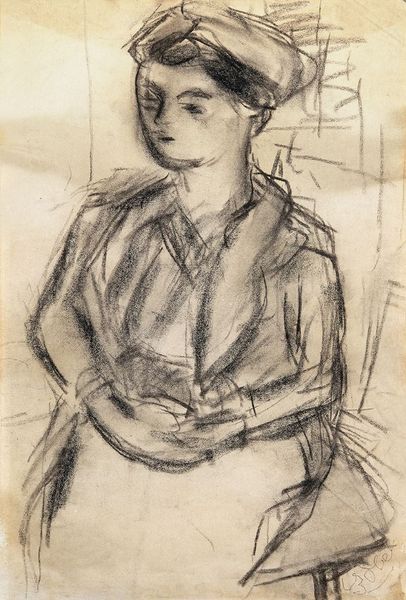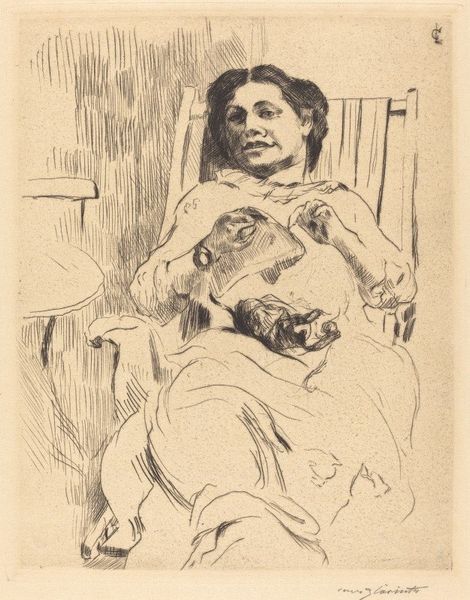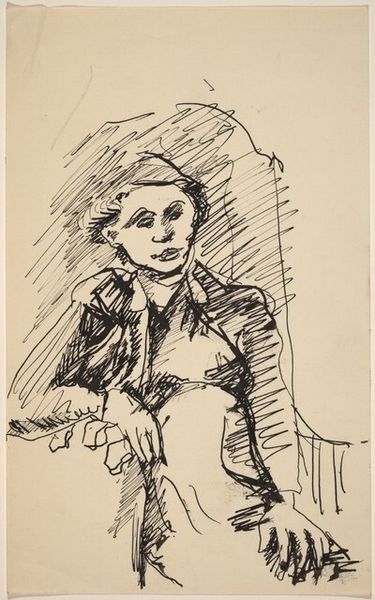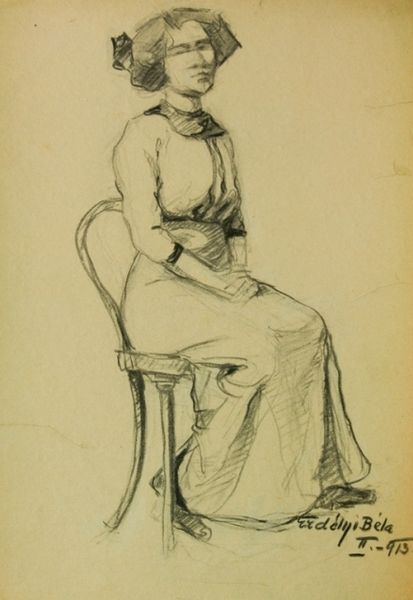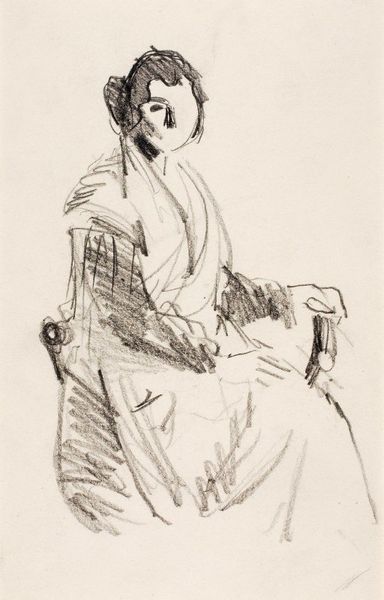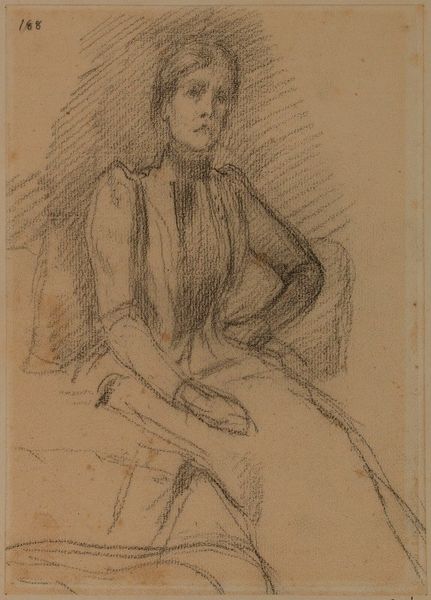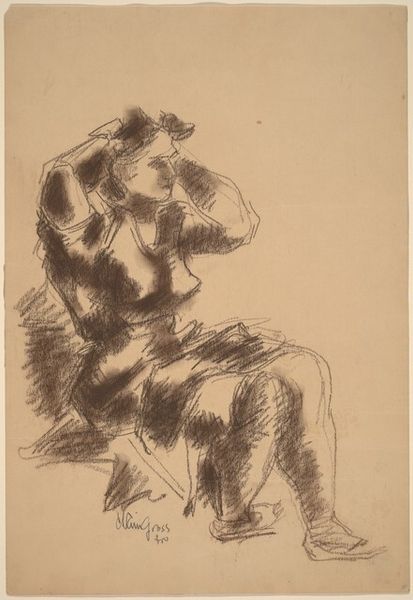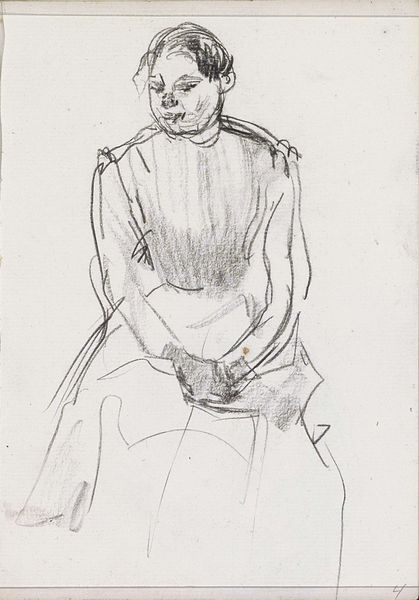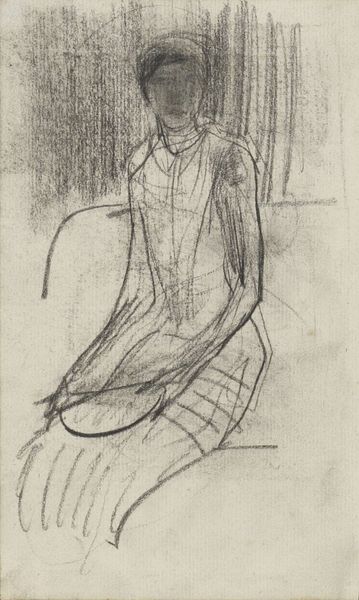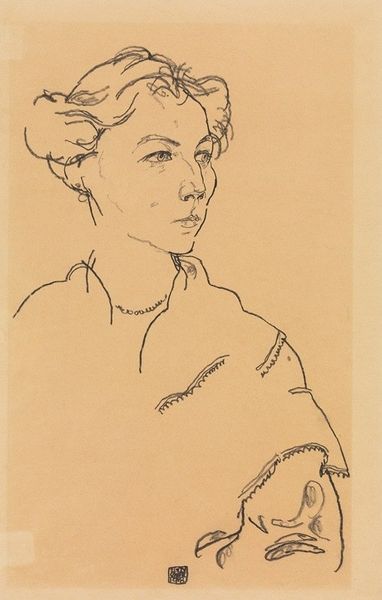
drawing, ink, pen
#
portrait
#
drawing
#
ink drawing
#
pen sketch
#
german-expressionism
#
ink
#
expressionism
#
pen
#
portrait drawing
Copyright: Public Domain: Artvee
Editor: Here we have Lovis Corinth’s 1918 ink drawing, "Anneliese Halbe." It feels so immediate, almost like a snapshot. There's something very direct in her gaze that makes me wonder – how should we interpret this work today? Curator: This drawing, beyond just being a portrait, provides a lens into the artistic and social upheaval of the early 20th century. Consider the date – 1918. Europe was reeling from the First World War. Expressionism, as seen here, wasn't just about aesthetics; it was about grappling with the psychological and social fallout of this conflict. Do you see how Corinth uses these raw, unflinching lines? Editor: Yes, it's quite striking – not idealized at all. It feels very… present. Curator: Precisely. Think about how traditional portraiture often served to elevate its subjects, reinforcing social hierarchies. Corinth, influenced by the Expressionist movement, disrupts that. He strips away artifice, revealing a certain vulnerability in Halbe. We might consider how gender and representation intersect here, particularly during a time of shifting social roles for women. The war forced women into the workforce and into new roles. Is Halbe presented as defiant, worn down, or contemplative? What is Corinth implying here? Editor: It's not a triumphant image, that's for sure. More like…resigned? Perhaps even subtly challenging. Curator: The active, almost frenetic, lines suggest an internal struggle, a psyche grappling with trauma. It is vital to consider how such works reflect the broader trauma of the period and allow us to look critically at similar power dynamics operating today. Editor: This has completely changed my perception of the artwork! I'd never thought about it in terms of social disruption. Curator: Art doesn't exist in a vacuum. By engaging with these deeper contextual layers, we uncover the potential to speak to our contemporary condition.
Comments
No comments
Be the first to comment and join the conversation on the ultimate creative platform.
